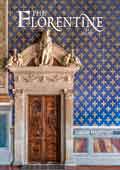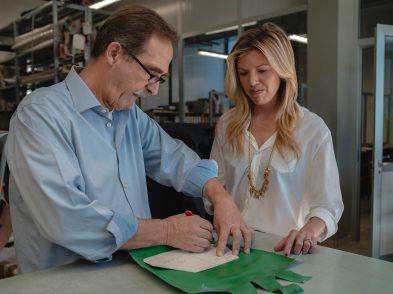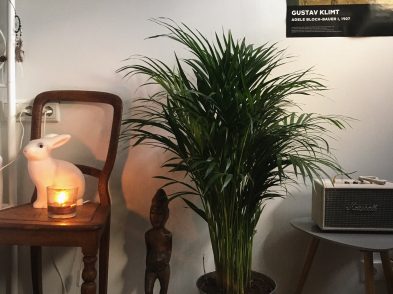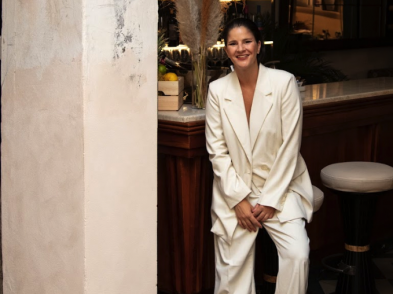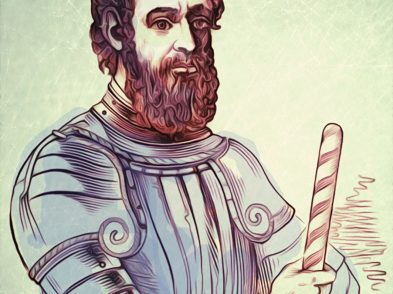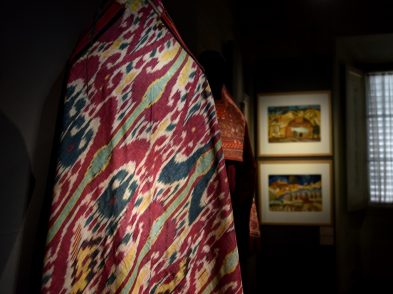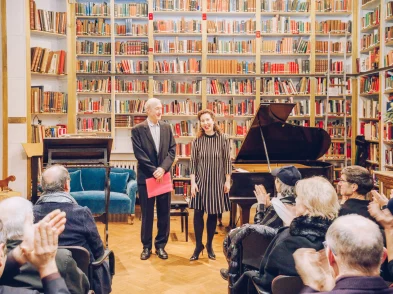A new exhibition, St. Javelin, has opened up at Museo Novecento. Curated by Sergio Risaliti and presenting images by German artist Julia Krahn, these powerful bodies of work are on display until January 29, 2023.
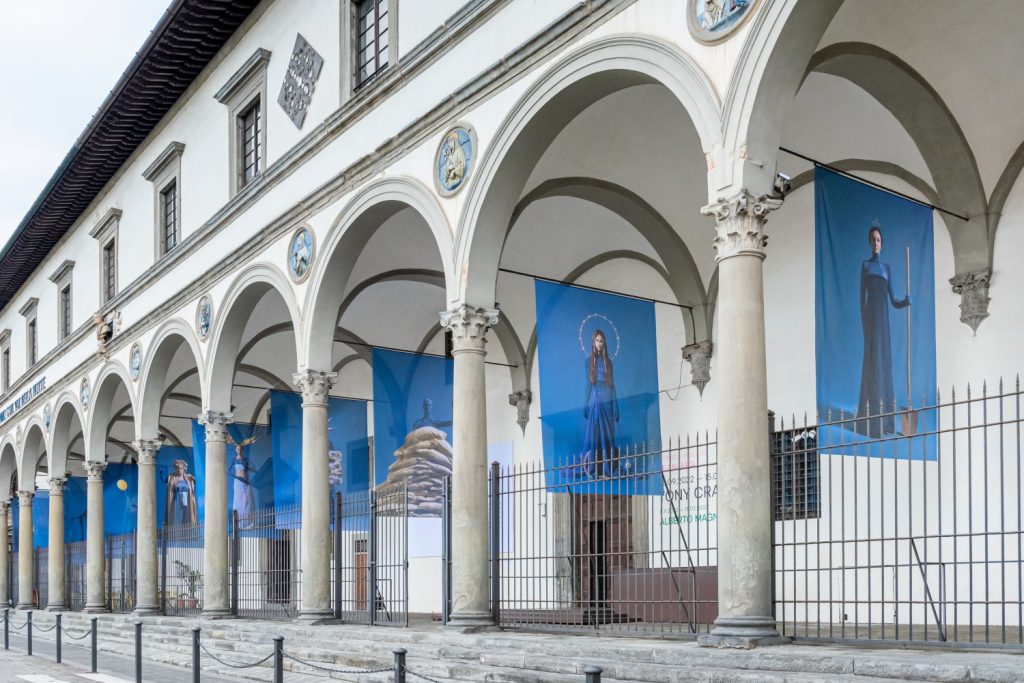
The exhibition is sectioned in two parts, the first, which is displayed above the outside terrace of the museum, is a series of 10 flags each wearing the portraits of Ukrainian female refugees. The 10 women in each of the photos differ in age, appearance and experience, yet all share the unfortunate common ground of being impacted by the progressing Ukrainian war. Each portrait oozes with dignity and tenacity, which has not been lost, despite surviving insurmountably difficult events. The flags billow vigorously in the lashing mid-afternoon breeze, which seems suitable and even reflective of the relation between the power of the photographs and the untethered nature of the flags. The girls and women in these images are relentless in their strength, yet fluid and adaptable to the conditions handed to them. The resistance of their gaze never wavers, regardless of how intensely the wind blows.
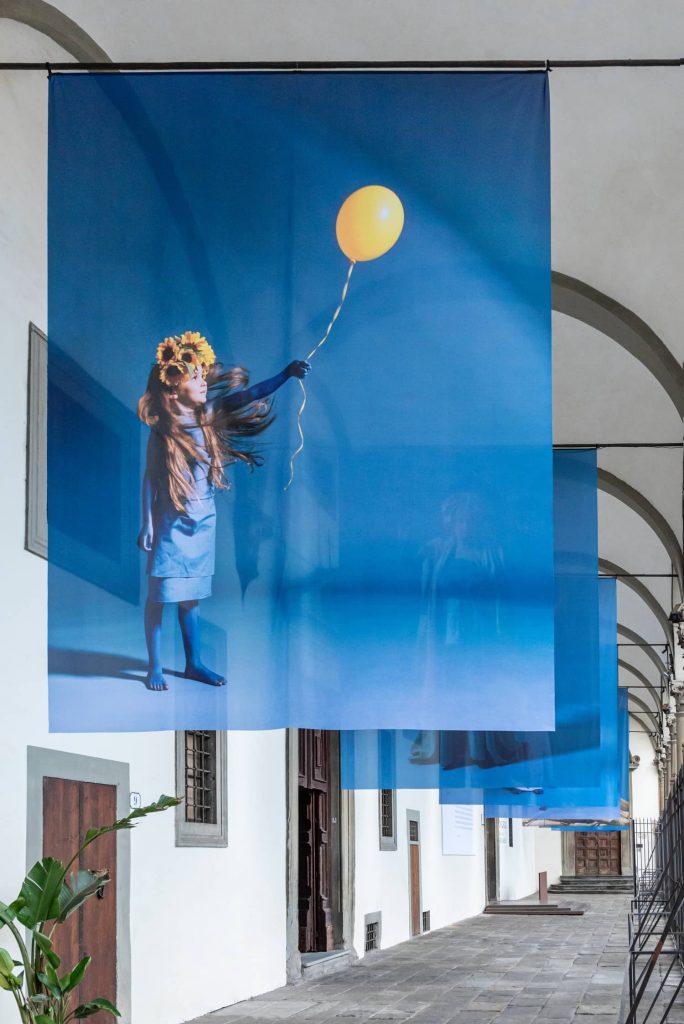
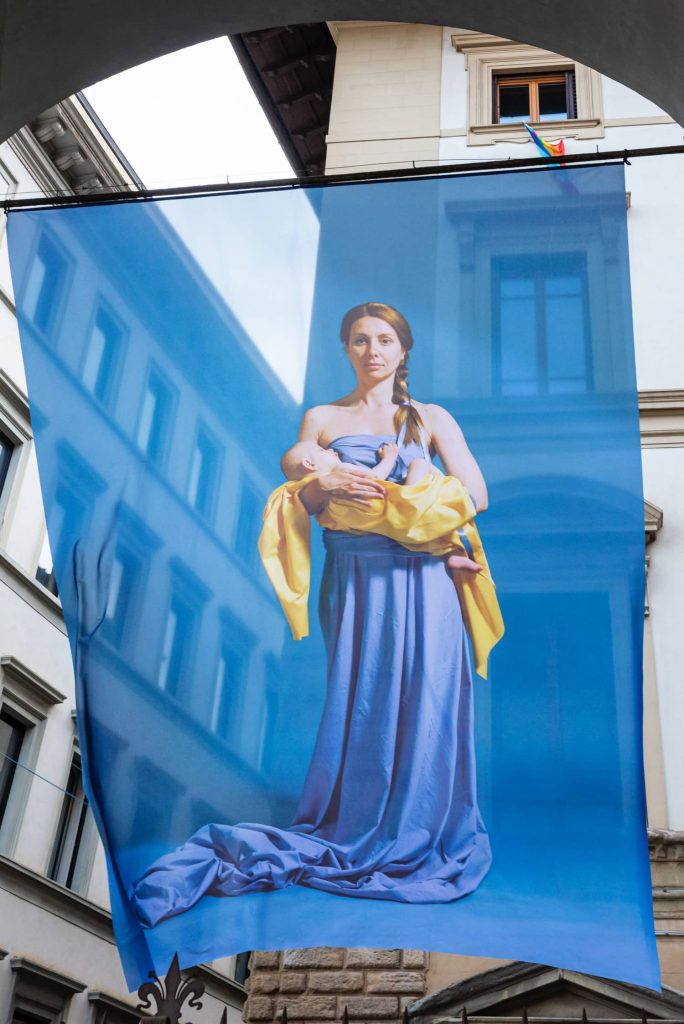
After pacing the stretch of the flags and taking in each of the powerful images, I asked Krahn about her relationship with the women and girls she photographed. The images, stoic and strong, carry an obvious heaviness in relation to the war and its impact on each of the people in the images.
Julia remarks that she built an intimate relationship with each of the women and girls in the images. The process of the actual picture taking was incredibly meticulous, one that involved hours of preparation for each shot. The entire series was shot analog, not digital, so she only took three pictures for each subject in the series, meaning that everything had to be perfect. Each of them had to start off nude before being painted in the dark blue seen throughout and then being embellished with the costumes and set pieces, each a unique character. This allowed for that intimacy to be built.
“I have a story to tell,” the artist recounts one of her subjects, a 12-year-old girl who begged her mother to contact Julia, so that she could be a part of the series. With initial hesitation, her mother eventually agreed and allowed her daughter to participate. This girl was eager to tell her story, explaining that the conditions of the imperative move from their home in Ukraine to Italy was the first time her mother ever had to lie to her. She was told by her mother that they would only stay for a few months when, in reality, they will remain until the war is over.
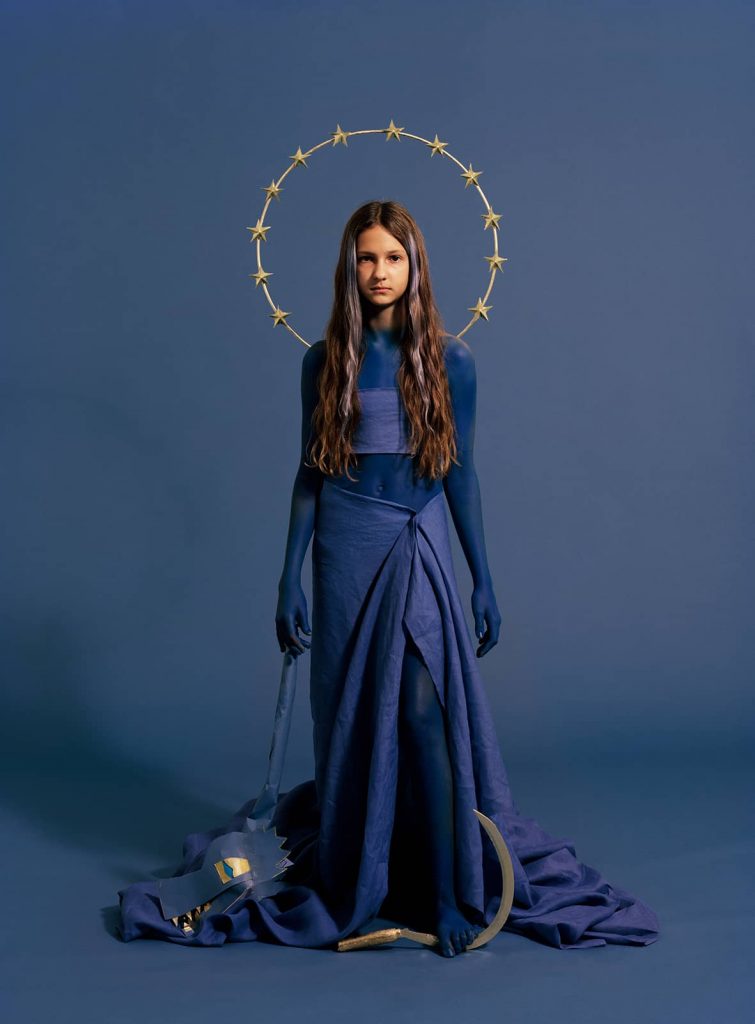
This forms the understanding an integral part of this exhibition: motherhood. “I don’t have any kids, so I have a lot of motherhood to live.” Julia’s statement implies that the concept of motherly instincts are exactly that: an instinct. It is an innate thing that women are born with: it lives inside of us. This intrinsic maternity can be considered synonymous with sacrifice, which is exactly what these women have had to do with their families, a in-built sacrifice for survival that only a mother could understand. Julia concludes by stating that the main narrative of her subjects is this: “We want to be seen. We want to be loved.” It is crucial to heighten the voices of these women and echo their stories.
Ascending to the first floor of the museum, we are met with the second part of the exhibition, Die Taub. Eight images cover the walls, extending over a corner of the loggia, sectioning in half, four on each side of the corner.
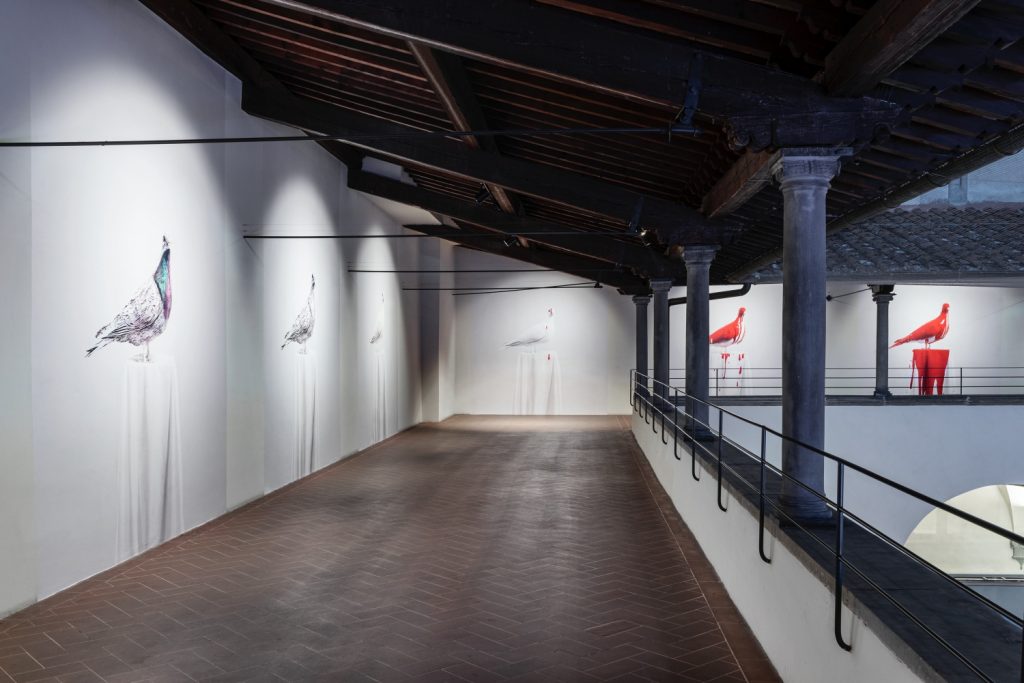
The images depict a pigeon metamorphosing into a white dove, then being covered in a blood red substance. Doves are a widely held symbol of peace in Christianity and spirituality. The transformation happening in the images symbolizes peace experiencing a state of injury as a result of the war and the destruction it has caused.
